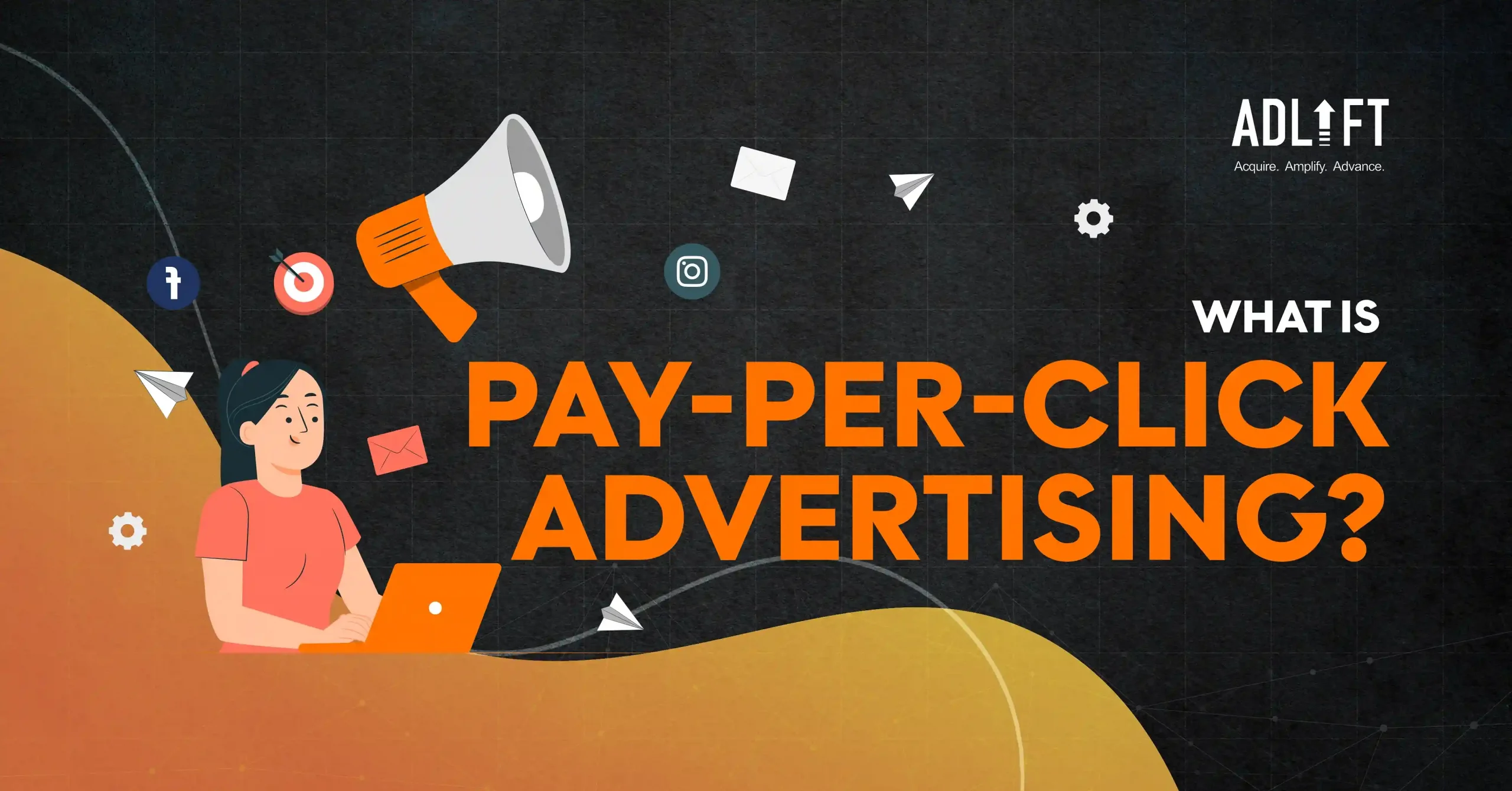Decoding PPC Full Form and its Importance in Digital Marketing

In digital marketing, acronyms like SEO, SEM, and SMM have become buzzwords. One term that particularly stands out is PPC. PPC, or Pay-Per-Click, is an online advertising model in which advertisers pay a fee each time their ad is clicked. It’s a way of buying visits to your site rather than attempting to earn those visits organically. But there’s much more to PPC than this definition.
But what is Pay Per Click? And more importantly, how can it help your brand stand out in the competitive digital marketplace? Do not worry. This article will answer all these questions. It will explore the ins and outs of pay per click and the key metrics to measure the success of this campaign.
What is PPC?
So, what is PPC in digital marketing? PPC, or pay per click advertising, involves a set payment made by the advertiser each time a user clicks on their ad. The goal is to drive targeted visitors to a certain landing page, app, or website and ultimately encourage a certain user action—like making a purchase or registering for a service.
PPC advertisements make use of a combination of text, photos, and videos. Websites, social media, and search engines are just a few places they might be seen. In a successful PPC campaign, the focus lies on generating value from clicks, such as sales, that surpass the incurred costs. Therefore, the actual pay per click becomes less significant as long as the overall return on investment justifies it.
How Does PPC Work?
Advertisers compete for advertisement placement within a search engine’s sponsored links through Pay Per Click whenever a relevant search query is initiated. The process involves selecting a campaign type that aligns with your goals, fine-tuning your settings and target audience (like devices, locations, schedule), setting your budget and bidding strategy, providing your landing page URL, and creating your ad.
Once the ad is live, its placement and cost per click are algorithmically determined based on factors like your budget, bid, campaign settings, and the quality and relevance of your ad. The ultimate aim is to create relevant and trustworthy pay per click campaigns that result in higher ad positions and lower costs.
What is PPC Important?
Pay Per Click advertising is important for several reasons. Some of the reasons are:
Achieving Business Objectives
Pay Per Click (PPC) is a powerful tool for achieving various business and marketing objectives. These include increasing brand visibility, driving website traffic, generating leads, or facilitating e-commerce transactions. By targeting specific keywords related to your business, you can reach potential customers actively searching for your products or services.
User Journey Tracking
Tools like Google Ads and Analytics allow you to track a user’s journey from their first encounter with your ad to the point of conversion. This can provide valuable insights into user behaviour and preferences, enabling you to optimise your marketing strategy and improve the user experience.
Immediate Impact
Unlike organic SEO tactics, which can take months to yield results, PPC ads can be launched quickly and start driving traffic to your site immediately. This makes PPC a particularly effective strategy for businesses looking to increase their online presence quickly.
Quantifiable & Monitorable
One critical advantage of PPC advertising is its measurability. You can track a wide range of metrics, including impressions (how many times your ad was shown), clicks (how many times your ad was clicked), and conversions (how many times a click led to a desired action, such as a purchase or a sign-up). These metrics allow you to assess the performance of your ads and make data-driven decisions to optimise your PPC campaigns.
What are the Components of PPC Campaign?
PPC campaigns comprise several essential components that help in achieving marketing objectives and drive results. The components of pay per click marketing are:
Keyword Research
This is the foundation of any Pay Per Click campaign. It involves identifying and selecting the keywords that your target audience is likely to use when searching for products or services similar to yours. This involves understanding your industry, your competitors, and your customers. Tools like Google Keyword Planner can help identify high-volume and relevant keywords. The goal is to find keywords that are relevant, have high search volume, and are not overly competitive.
Ad Copy
The ad copy is the text that makes up your PPC ad. It should be compelling and encourage potential customers to click on your ad. A good ad copy is concise, includes a clear call to action, and highlights the unique selling points of your product or service. It should also include the keywords you’re targeting to ensure relevancy for the user and the search engine.
Landing Page
The landing page is where a user ends up after clicking on your ad. It should be highly relevant to the ad copy and provide a seamless experience for the user. This means it should match the promise made in the ad copy and provide the information or product the user is looking for. A good landing page is easy to navigate, has a clear call to action, and is optimized for conversions.
Campaign Settings
Campaign settings include choosing the right network (Search or Display), geographical targeting, language preference, budget, and bidding options. These settings determine who sees your ads and how much you pay for each click. It’s important to choose settings that align with your campaign goals.
Also Read – Do’s and Don’ts of Successful PPC Advertising
What are the types of PPC ads?
PPC, which stands for Pay-Per-Click, is a powerful digital marketing model that helps businesses drive targeted traffic by paying only when users click on their ads. Understanding the different types of PPC ads can help businesses craft effective strategies to maximize their ROI.
- Search Ads: These are text-based ads appearing on search engine results pages when users search for relevant keywords. They are highly effective in capturing intent-driven traffic.
- Display Ads: These ads appear on websites, apps, and YouTube videos in the form of images, banners, or interactive media, helping with brand awareness.
- Shopping Ads: E-commerce businesses use shopping ads to showcase products with images, prices, and ratings directly in search results.
- Video Ads: Found mainly on platforms like YouTube, video ads engage users through visual storytelling.
- Social Media Ads: These ads appear on platforms like Facebook, Instagram, LinkedIn, and Twitter, targeting specific demographics and interests.
- Remarketing Ads: These help businesses re-engage users who have previously interacted with their website or app, increasing conversion chances.
- Local Services Ads: Perfect for service-based businesses, these ads allow customers to connect directly with verified providers in their area.
Each PPC campaign type serves different goals, from brand awareness to lead generation, making PPC an essential component of digital marketing.
What are the top PPC advertising platforms?
Choosing the right PPC advertising platforms is crucial to running a successful campaign. Different platforms offer unique advantages depending on business goals, audience targeting, and budget.
- Google Ads: As the largest PPC platform, Google Ads offers search, display, shopping, and video ads, making it essential for most advertisers.
- Microsoft Ads (Bing Ads): This platform functions similarly to Google Ads but reaches an older, high-income demographic on Bing and Yahoo.
- Facebook Ads: With highly customizable audience targeting, Facebook Ads are great for brand awareness and conversions.
- Instagram Ads: Owned by Meta, Instagram Ads allow businesses to leverage visually engaging content for a younger audience.
- LinkedIn Ads: Ideal for B2B marketing, LinkedIn Ads help businesses connect with professionals and decision-makers.
- Twitter Ads: Brands use Twitter Ads for trending conversations, engagement, and increasing brand visibility.
- YouTube Ads: Being the second-largest search engine, YouTube offers video-based PPC ads that are highly engaging.
- Amazon Ads: E-commerce businesses benefit from Amazon PPC by promoting their products directly on the platform where users are ready to buy.
Understanding the importance of PPC and choosing the right platform can significantly impact the effectiveness of a PPC campaign. Each platform provides unique features to help businesses grow in the competitive world of PPC in digital marketing.
Unravelling the Power of PPC: A Final Word
This pay per click in digital marketing strategy holds immense potential for businesses of all sizes. Pay Per Click offers a cost-effective way to reach the right audience at the right time by allowing advertisers to pay only when their ad is clicked. Moreover, with the ability to track and measure results in real-time, businesses can continuously optimise their campaigns for better performance and ROI.
However, navigating the complexities of Pay Per Click can be challenging, which is where expert guidance becomes invaluable. This is where AdLift, a global digital marketing PPC agency, steps in. Our team of experts helps set up and manage your PPC campaigns and ensures they are aligned with your business goals for maximum impact.
We can handle everything from keyword research and ad creation to campaign management and performance reporting. With AdLift by your side, you can leverage the power of PPC to propel your business to new heights. Remember, in digital marketing, every click counts!
